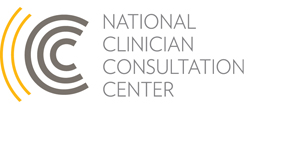Case of the Month: Considering PrEP for Sero-Discordant Couples
Case Summary
The Clinician Consultation Center received a call from a primary care provider regarding a 34-year-old man who was evaluated in the emergency department three days earlier for a non-occupational exposure after the condom broke during intercourse with his HIV-positive female partner. The patient has completed three days of post-exposure prophylaxis (PEP) medications without incident. He is healthy otherwise and takes no medications. Although they plan to continue using condoms consistently (the exposure was the first time a condom broke since the two became sexually active six months ago) and are committed to a monogamous relationship, the exposure and subsequent anxiety surrounding it were very distressing to both. He and his partner have been discussing the incident and are interested in learning more about pre-exposure prophylaxis (PrEP) as a prevention tool. The couple has been hearing a lot about PrEP in the news and would like to know if the patient would be a good candidate. The patient has not had any signs or symptoms of acute HIV and arrived with copies of his negative HIV and hepatitis B testing from the emergency department. His partner reports that she is taking co-formulated efavirenz/tenofovir/emtricitabine with a “high” CD4 and “undetectable” viral load for “years”. Neither one has had any sexually transmitted infections in several years.
CCC Consultant Response
PrEP could be considered in the future for this patient, as he is in a serodiscordant relationship and would be at risk for HIV acquisition if unprotected sexual exposures were to occur again. As a heterosexually active man, he is potentially eligible for PrEP according to 2014 CDC guidelines1 simply by being in an ongoing sexual relationship with an HIV-positive partner. However, it should be noted that his risk of acquiring HIV is very low given multiple key factors: 1) his partner is on combination antiretroviral therapy with sustained virologic suppression2; 2) he is the insertive partner (the estimated per-act probability of HIV acquisition for the insertive partner from an infected source person is 4 per 10,000 exposures involving penile-vaginal intercourse3); 3) the couple reports they intend to continue using condoms consistently; and 4) both the patient and his partner have not had any sexually transmitted infections. The degree to which PrEP offers a significant clinical benefit in this scenario is not well-quantified. Therefore, the current protection methods being used by the couple are excellent and the added clinical benefits from PrEP are small. But, as an additional reassuring layer of safety, the value of PrEP for this couple might be considerable. The provider should have a full discussion of the risks and benefits of PrEP with the patient (and his partner, if appropriate). If their planned condom use were to change in the future — for example, if the couple were to attempt to conceive — PrEP may take on a different role for the couple.
Importantly, if the patient were to initiate PrEP, HIV would need to be appropriately ruled out with surveillance testing after this most recent unprotected sexual encounter. For patients who transition directly from PEP to PrEP, regular HIV screening should be conducted after the initial exposure that prompted PEP administration. PrEP adherence and follow-up test/visit frequency should be discussed in detail and in advance of the PEP-to-PrEP transition so the patient/couple and provider can plan accordingly. Sexual risk reduction counseling should also be provided to the patient, as PrEP is part of a comprehensive package of HIV prevention.
References
1. US Public Health Service. Preexposure Prophylaxis for the Prevention of HIV Infection in the United States- 2014. A Clinical Practice Guideline.
2. HIV Prevention Trials Network HPN052: “HIV Prevention Study Demonstrates Sustained Benefit of Early Antiretroviral Therapy”
3. CDC HIV Risk Behaviors
Because CCC consultations are based on information provided by the caller or clinician accessing the online consultation center, without the benefit of a direct evaluation or examination of the patient, consultations are intended to be used as a guide. They do not constitute medical advice and are not to serve as a substitute for medical judgment. This Case of the Month includes consultation based on the most up-to-date evidence at the time of its publication. To learn about current recommendations, please call one of our clinical consultation lines.
 University of California, San Francisco |
University of California, San Francisco |
